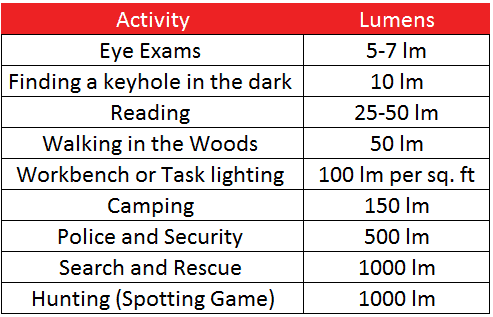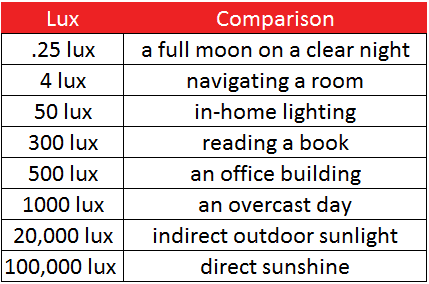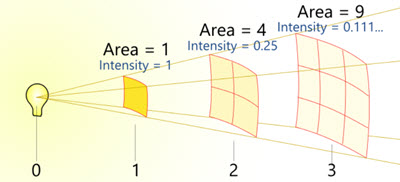
LUMINANCE

Lumens is a measurement of how much light is emitted from a light source in all directions.
Lux measures the amount of light that falls on a surface.
Candela is light’s intensity as visible to the human eye in a specific direction.
History
The history of Candela goes back 150 years. The term candlepower – now mostly obsolete – was coined in 1869 according to Merriam-webster, and refers to a unit of luminous intensity. Between 1869 and 1948, a unit of candlepower was measured from a candle that was made from pure spermaceti (wax from sperm whales), weighed one-sixth of one pound, and burned at 120 grains per hour.
In 1948, the definition was changed to reference platinum and radiometry instead of whale wax and grains, and the term candlepower was replaced with Candela.
Use of the English word Lumen as a measure of light began in the late 1800s – more than 20 years after the coinage of the word candlepower. It was an adaptation of the Latin word lumen, which translates to English as light. Another adaptation of a Latin word, lux emerged in English around the same time. Like lumen, the Latin word lux also means light.
Lumen
The lumen (symbol: lm) is the unit for luminous flux. It measures the total amount of light emitted by a light source in all directions. Luminous flux takes into account the sensitivity of the eye to the visible part of the electromagnetic radiation. Lumen is therefore the unit to measure the brightness of a light source independently of the direction of the light beam.
Luminous flux is a measure of the total amount of light in a light beam. Light intensity is a measure of the light density. If one sees a part of a light beam, that part has a smaller luminous flux (in lumen) but (in principle) the same luminous intensity (in candela) as the whole beam. The luminous flux depends on the power of the source and on the color of the light. An incandescent lamp gives a luminous flux of approximately 12 lm / W. The smaller the angle of radiation in which the light is emitted, the higher the luminous intensity (with constant luminous flux).

Lux
The lux (symbol lx), latin for light, is a unit of illumination: 1 lux is the illuminance produced by 1 candela on a surface perpendicular to the light rays at a distance of 1 meter from the source.
The lux thus corresponds to the illuminance that is obtained when each square meter of the considered surface receives a luminous flux of one lumen. The number of lux is thus found as the quotient of the total received luminous flux, expressed in lumens, and the size of the illuminated area expressed in square meters; therefore 1 lux = 1 lumen / m².
Lux can be measured from different distances. Be careful when making a comparison between two lamps. A lamp that gives the same number of lux at three meters distance than a lamp measured at one meter is much more powerful than the one measured on a meter.
With a light meter you can measure the lux value of any surface or space. When measuring, make sure that the light meter is placed at working height. As the distance from the light source to the object to be illuminated increases, the illuminance decreases in the square.

Candela
Brightness is indicated by the candela (symbol cd). The light intensity indicates how much light is in each piece of a light beam. The word candela means candle in Latin. One candela corresponds approximately to the light intensity of a normal candle.
The candela is related to the lumen and lux units. The unit lumen is used for the total luminous flux in a light beam. A light beam with a strength of 1 candela and a space angle of 1 steradian (for a cone-shaped beam corresponds to an opening angle of 65.5 °) has a total luminous flux of 1 lumen. 1 candela is thus equal to 1 lumen per steradian. When a beam with a strength of 1 lumen falls on a surface of 1 square meter, this gives an illuminance of 1 lux. 1 lux is therefore equal to 1 lumen per square meter.
How do Lumens, Candela, and Lux relate to each other?
Now that you fully understand Lumens, Lux, and Candela, let’s see how these three measurements relate to each other.
Lumens are the measurement of the total amount of light coming from a light source.
The reflector’s shape and surface, along with Lumens, determines the Candela or Throw of the light.
The amount of light that falls on or through a target is the Lux, which is affected by distance and angle.

Nit
And finally, we come to the final metric that we need to understand: Nit!
NIT is a metric for measuring luminance, which is how much light an object emits. It comes from the Latin Nitere, which means “to shine.”The scientific name for this unit is “candela per square meter” (cd/m), but for some reason, the term “Nit” (nt) has become widely adopted when talking about displays (or screens)—the two terms are interchangeable.
go to - https://www.torchspot.com/lumens-lux-and-candela/